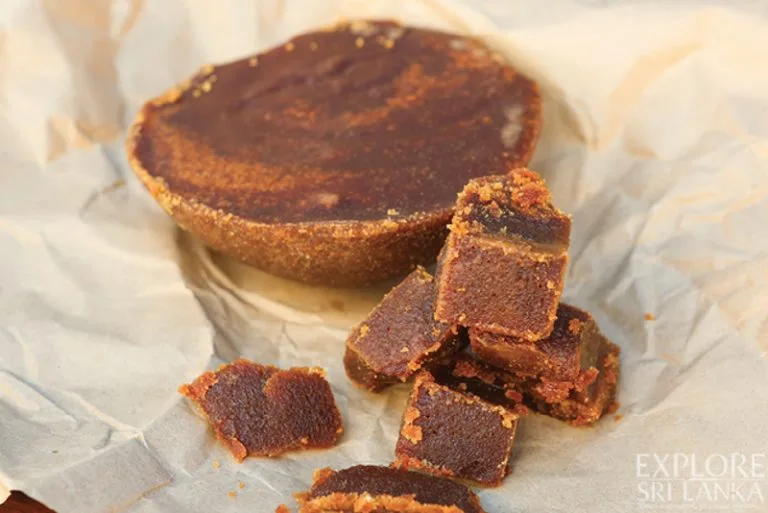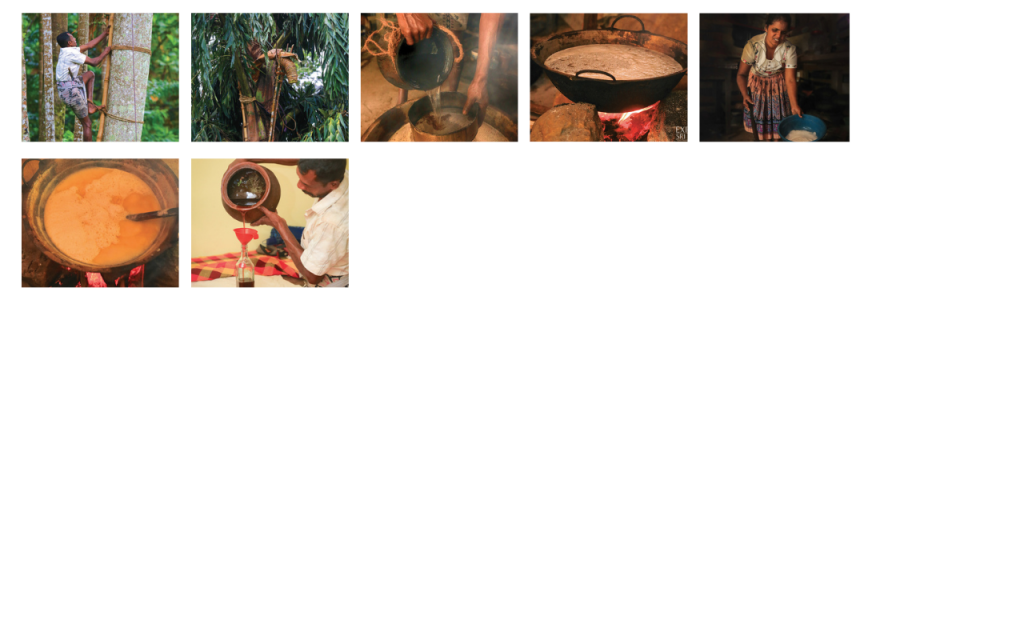
Welcomed by the sweet smiles of Kiriweldola, we were treated to the island’s honeyed indulgence – Kitul Pani. It is the delicious syrup made from the sap of the kitul palm (fishtail palm), the sweetener of many a traditional Sri Lankan delicacy.
Words Darrshini Parthepan
Photographs Vishwathan Tharmakulasingham and Geeth Viduranga

We only heard the crunch of gravel under our feet, the chirping of birds and gentle whisper of the breeze, as we made our way down the rugged path to reach Kiriweldola. It is a quaint village amidst a green backdrop of striking wild blooms hidden away at least two kilometres beyond the Deniyaya town.
Here we met Laal Rohitha and his family. While tea and cinnamon are their main livelihoods, Laal is also a kitul tapper. Climbing tall palms to tap the kitul mala (inflorescence) and extract its thelijja or sugary sap, is something he has done since he was a carefree 16-year-old. Calling out his wife to serve us fresh elakiri milked from his own cattle, Laal started his daily routine by diligently inspecting his tools. He ran the thin light knife over a fallen branch to sharpen the blade, satisfied, he tucked it into the waistband of his sarong. Also strapped around his waist was a clay pot tied to a rope and a wooden stick.
Commonly known as the fishtail palm or jaggery palm, kitul plants grow abundantly in the Deniyaya area. Requiring little or no attention, a matured palm can grow up to almost 40-feet, and can bear flowers twice a year. Firstly, Laal nimbly climbed up a bamboo ladder tied to the trunk of a kitul palm in his garden. This makeshift ladder is his only foothold to reach the flourish of fronds that contain the sweet syrup. Drooping with clusters of flowers, the crescent shaped kitul mala can grow up to five metres in length. Usually a kitul tree is expected to flower up to seven times during its lifespan, and while the first kitul mala is the largest, the inflorescence decreases in size until the demise of the palm.
When the kitul mala is around two months old, it is prepared for tapping. First primed by warming its base, parts of its sheath are then removed. Thereafter, a special poultice paste is tied to stimulate the flow of thelijja. In addition to being boiled down to make treacle, it can also be fermented to make frothy, white toddy. To prevent the floret from breaking, a simple wooden bracket is placed to firmly support the stem. On average thelijja can be collected to fill 100 bottles and 25-30 bottles of treacle can be made from one kitul mala.

Once at the top of the kitul palm, Laal positioned himself on the scaffolding by the base of the inflorescence. After untying the draping, he made a deep incision into the kitul mala and, due to the pressure, a rain of flower clusters was released. This surreal instance is called “shedding a tear” as the kitul mala is said to lose the earthly goodness collected over the years of time.
We curiously watched as the clay pot was placed at the base of the kitul mala to collect the flow of thelijja. This smoky sap is generally collected twice a day – once early morning and later in the afternoon. Using a rope, Laal slowly lowered a clay pot brimming with thelijja to the ground and descended the palm with a smile across his face gesturing that he was happy with the yield.

As we approached the house, a blazing hearth had already been prepared in the garden. Handing over the pot of sap to his wife, Laal set up a large wok over the hearth into which the thelijja was poured through a peneraya (strainer). The atmosphere was infused with a sweet aroma as the white liquid gradually thickened into an amber brown. Laal’s wife constantly stirred the syrup with a giant custom-made spoon. The process takes two to three hours and is continued until the syrup reaches a delectable consistency. When the sap is boiled, a bubbly foam surface appears and it should be removed attentively. The sufficiently boiled sap was removed from the fire and the dense honey-like sap was poured into glass bottles. Laal does not need to send these bottles to the market as customers come in search of this golden sweetener. The treacle boiled further and poured into coconut shells are left to cool, which becomes melt-in-the-mouth kitul hakuru (jaggery).
Kitul pani is an important part of Sri Lankan custom. The island-favourite dessert Kiri-Pani is the blissful union of creamy meekiri (buffalo curd) and golden kitul pani. It is also the sweetener added when making traditional sweetmeats such as kavum (oil cakes), mung kavum and aasmi. Due to its healing and nutritional properties, it is a key ingredient in Ayurveda.
Tingling with sugary, woody and floral flavours, kitul pani is a purely natural Sri Lankan treat. Charmed by this exotic flavour, we bade goodbye to Laal and his family and left the little hamlet of Kiriweldola with sweet memories and bottles of golden kitul pani.



